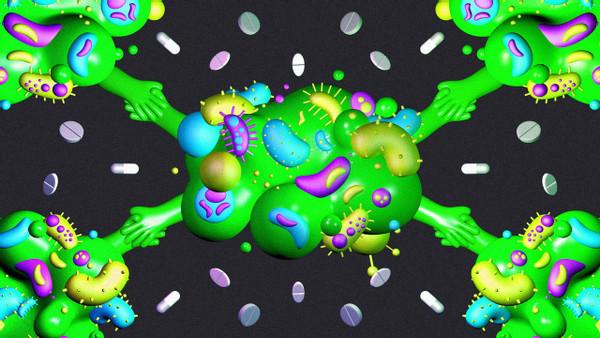Sticking together makes bacteria nearly invincible
Curated from: economist.com
Ideas, facts & insights covering these topics:
7 ideas
·1.41K reads
14
2
Explore the World's Best Ideas
Join today and uncover 100+ curated journeys from 50+ topics. Unlock access to our mobile app with extensive features.
What Are Biofilms?
Biofilms are a complex community of microorganisms that adhere to a surface and are embedded in a matrix of extracellular polymeric substances (EPS), a glue-like substance microorganisms produce to stick together.
The microorganisms have various shapes and lengths. For its shapes, it includes spheres, rods, spirals, corkscrews, and so on. They are typically about 1 centimeter long and ten of thousands times smaller, which are invisible to our naked eyes.
The fact that they stick together implies that they love to live in colonies too. It is like a fortress that is impenetrable by antibiotics.
15
299 reads
How Do Biofilms Behave?
Places of formation:
- they can form in places like rocks, medical devices, industrial pipelines, and teeth.
Colony Formation:
- To form a colony, microorganism finds its way to a surface, often attracted by food. It then secretes sticky compounds, EPS, to attach itself & begin to divide. A small colony of descendants will form within a couple of days or hours.
Global Impact of Biofilms:
- The global economic crisis of biofilms is at over 3.9 billion
Characteristics:
- Slimy Aggregates
- Individually distinct
- Barricades itself to form a protection (biofilm)
15
221 reads
If it is important, why it is less known?
Although it is well-known in the scientific community, it is less known in the general public for several reasons:
Lack of public awareness:
- It is a more specialised topic in microbiology and related fields, contributing to their lack of awareness and understanding.
Difficult to model in the lab:
- This is because biofilms are complex structures with multiple layers and interactions between microorganisms and their environment.
15
195 reads
What are the ways to defeat it? (Pt. 1)
To fight it, there are a few ongoing tools that we can utilise:
Bacteriophages:
This method utilises a virus to infect the bacteria the same way it infects other organisms. Like antibiotics, phages leave the host's cells alone without harming human or animal cells.
However, this method is scientifically limited but is developed by Glasglow-based Fixed Phage.
Cold Plasma:
Cold plasma is a state of matter, in which electrons have been stripped away from their parent atoms by a power electric field.
This method is applicable in other areas, such as wastewater treatment.
15
182 reads
What are the ways to defeat it? (Pt. 2)
Zapping Bacteria:
It disrupts the membrane of bacterial cells with PL0206, a small protein that is attracted to the negatively charged environment inside a biofilm.
This method has been carried on Phase 1 clinical trial with 14 patients with prosthetic joint infections, where interim data looks promising.
Tearing it down:
It loosens two universal components of biofilms, known as DNA-B-II. Loosening the DNA scaffolding of the biofilms would cause a collapse of the structure.
Tested on two dozen bacterial species, no biofilms survived the disappearance of DNABII.
15
160 reads
VOCABULARY of the article (Optional Read)
Dislodge
- Knock or force out of position
Secretes
- Produce and discharge a substance
Glom onto
- become stuck or attached to
Evolve Resistance
- Growing harder to resist other dugs
"Persister"
- To remain, last, or continue for a long time after the expected time
intravenous injection
- An injection of a medication or another substance into a vein and directly into the bloodstream
15
170 reads
IDEAS CURATED BY
CURATOR'S NOTE
How to defeat superbugs!
“
Similar ideas
6 ideas
When The Magic Happens
collaborativefund.com
18 ideas
How People Think
collaborativefund.com
Read & Learn
20x Faster
without
deepstash
with
deepstash
with
deepstash
Personalized microlearning
—
100+ Learning Journeys
—
Access to 200,000+ ideas
—
Access to the mobile app
—
Unlimited idea saving
—
—
Unlimited history
—
—
Unlimited listening to ideas
—
—
Downloading & offline access
—
—
Supercharge your mind with one idea per day
Enter your email and spend 1 minute every day to learn something new.
I agree to receive email updates







